Decorating With Antiques: Silver’s Legacy
http://decor-ideas.org 06/07/2014 20:08 Decor Ideas
One reason people love to decorate with antiques is because of the memories they evoke — and antique silver objects are among the most evocative treasures we possess. Whether handed down from generation to generation or purchased new, they become one of the threads in a family’s history. A parent’s cigarette case or Grandma’s silver nut bowl are beloved keepsakes and add a touch of beauty to our homes.
Because these things are also part of our everyday life, and not just displayed in a glass case, they give us a special link to the past and remind our children of their heritage — of quirky family stories and fun adventures. These pieces travel with us through our lives, growing older with a special grace.
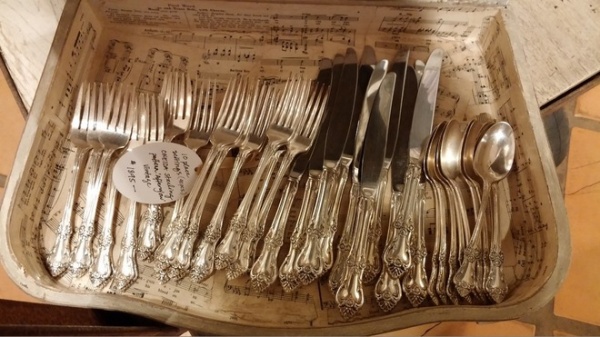
Let’s begin by defining terms. There are two basic categories of silver: sterling silver and silver plate. Sterling (as with the flatware seen here) is 92.5 percent pure silver mixed with 7.5 percent copper. The copper keeps the silver from being too soft and malleable.
Silver plating is a chemical process that adds a thin layer of silver to an item made of a different metal.
Sterling is much more expensive, but the advantages are that it will always retain its intrinsic silver value and will last virtually forever if well cared for. Silver plate can be just as beautiful, but the finish will wear off the base metal over time.
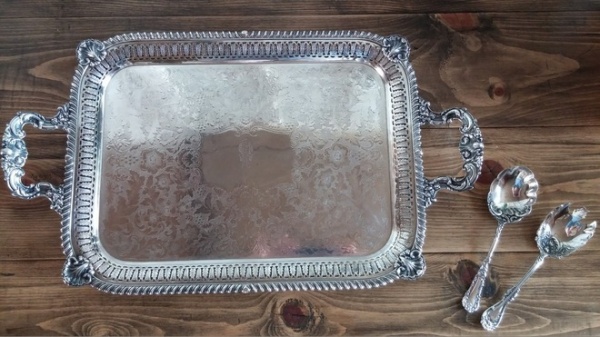
If this happens, all is not lost, because the piece can be replated. This lovely old Sheffield tray was almost completely worn down to the copper base metal, and the meat fork and berry spoon were in similar condition. Because I really love them, I had them replated, and am delighted with the results. (Although, to be honest, I also like gently worn silver plate that is rubbed through in a few spots — it has a lot of character.)
If you can afford sterling, it’s great, but silver plate is also wonderful, and I readily mix the two in my collections.
When shopping for silver, take a magnifying glass so you can see the markings. If it’s American sterling, it will be marked “sterling,” .925 or 925/1000. If it’s English sterling, it will have a picture of a lion passant (a standing lion with its right front paw raised). If it doesn’t have these marks, it’s not sterling. If it’s plate, it will often be marked “EP” (electroplate) or “EPNS” (electroplated nickel silver), among others.
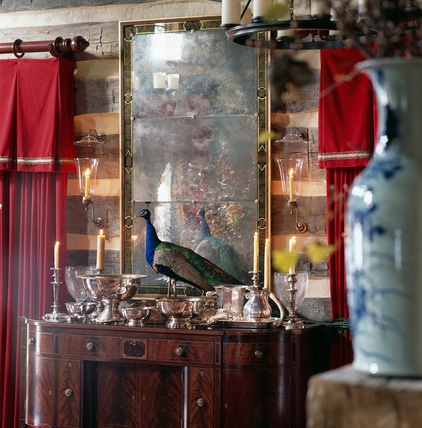
As with other collections, you can display your silver in various ways. The biggest impact is often made when pieces are grouped together, like on this handsome old sideboard. Bowls, pitchers and candlesticks are all collected around what my wife would call an inert peacock.
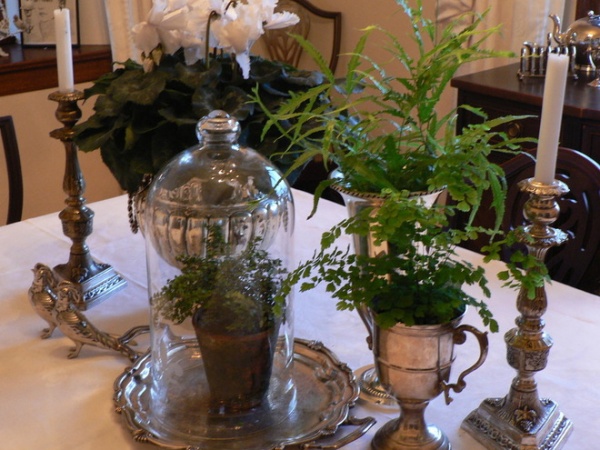
What could be more elegant than a pair of classic silver candlesticks on a dining table? And yet, in this case, the addition of a few other silver pieces raises the interest a notch or two and makes a bigger impression. And how cool to use several of them as containers for plants.
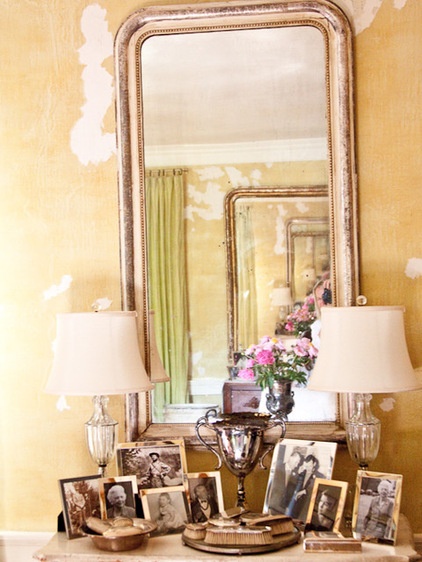
Silver frames amassed on a console, along with a trophy and a collection of silver hairbrushes, make a classy vignette in this living room. What a perfect way to display old family pictures! And remember, it’s absolutely OK to mix old and new, so if you don’t have any antique frames, feel free to buy new ones.
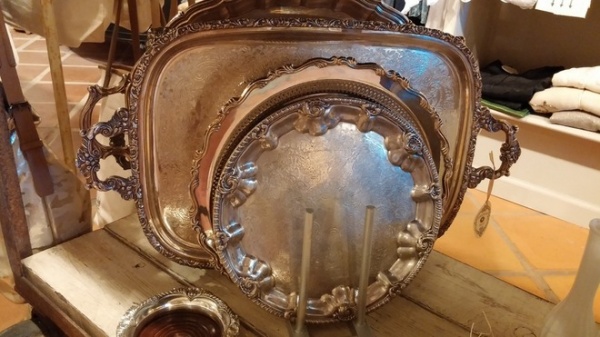
I love to go shopping for antique silver, and one of my new favorite places is the French Nest in the sweet little town of Sonoma, California. The owner, Holly, has an enticing mix of antique and vintage ceramics, glass and crystal, decorative tchotchkes of all kinds and some wonderful sterling silver and silver plate.
These silver-plate trays are just the thing for serving appetizers or for displaying crystal decanters on a drinks table. I would buy one …
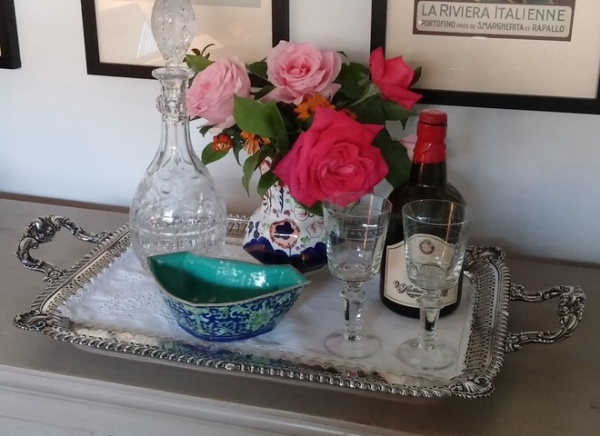
… if I didn’t have a fantastic one already. When I sit and talk with friends in my study, I love to serve them a glass of Madeira, and the silver tray makes it taste even better. (“Have some Madeira, m’dear … ”)
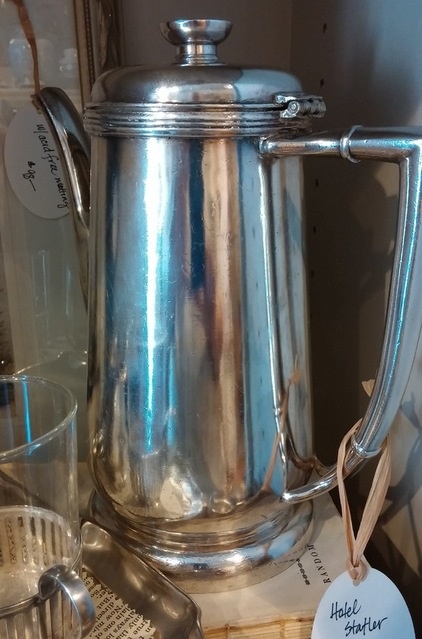
I have a special soft spot for silver coffeepots and am greatly tempted by this hotel silver one at the French Nest. It would be beautiful on the silver tray in my study, and I would love using it to serve coffee to guests (after the Madeira). I hope my wife, Becky, is paying attention … Father’s Day isn’t too far off!
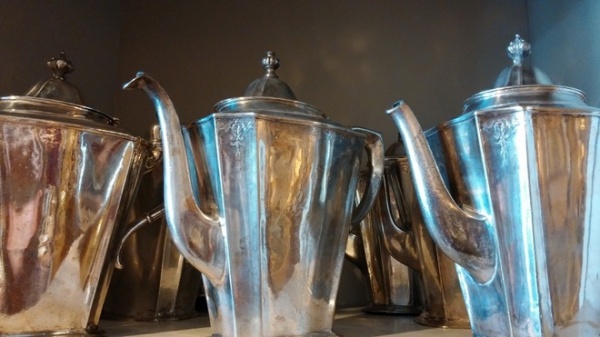
Speaking of hotel silver, Holly has a whole shelf of these awesome hotel silver teapots. Hotel silver is heavily plated silver that was used in more elegant times in many grand hotels and restaurants and on ocean liners. The plating is heavier because of its need to endure the abuse of restaurant life.
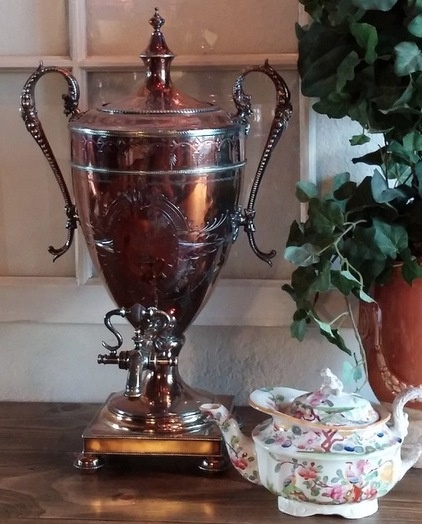
If you have a flamboyant piece of silver like this antique neoclassical urn, it can make a beautiful decorating impact all by itself …
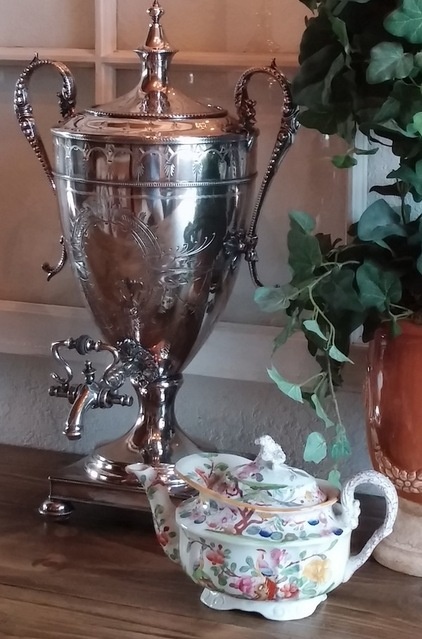
… especially if you polish it. Doesn’t this make you think of Downton Abbey and the small army of servants polishing silver while the family is away?
If you’re like me and lack a service staff, I’d encourage you to adopt my attitude. For me polishing silver is therapeutic. A few minutes of elbow grease, and black tarnish gives way to the subtle glow of old silver.
Make sure you use a silver polish that is gentle and doesn’t rub away any of the silver. I use Wright’s Silver Cream — I think my mother used it, too — because it does a great job and won’t do any harm to the surface.
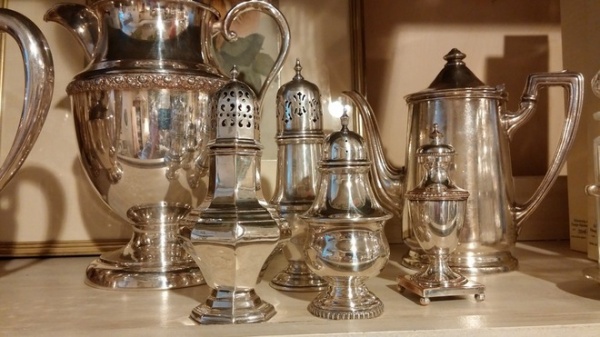
This collection of muffineers, pitchers and pots shows that silver, in all its delightful manifestations, is usable art. But more than that, it is a lingering connection to an elegant past. In one of my favorite books, Antiques at Home, Barbara Milo Ohrbach says, “Set on a shelf or on a beautifully laid table, old silver pieces add vitality to a room, reflecting light and shadow on their glittering, lustrous surfaces.”
More Decorating With Antiques:
Chests, Dressers and Buffets
Sit Pretty on Settees and Sofas
Armoires, the Versatile Beauties
The Magic of Ceramics
Related Articles Recommended












